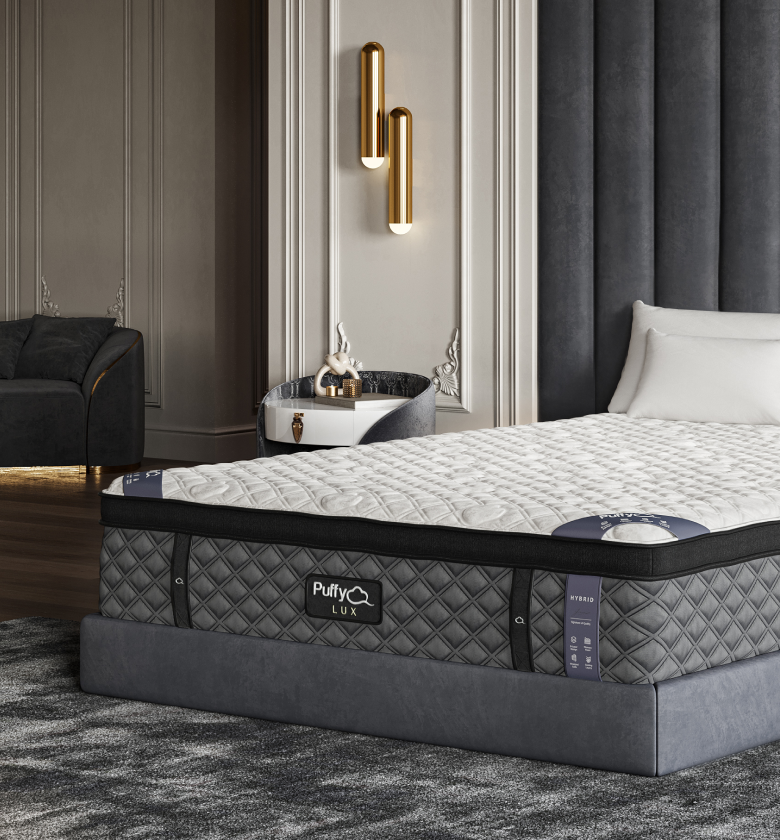Mattress shopping is rarely simple. From brands and sizes to materials, there are myriad factors to consider. But one element often gets overlooked: the density of the foam. If you’ve found yourself scratching your head over the term density foam mattress, this comprehensive guide is here to enlighten you.
Foam Mattress Density: What Is It?
In simplest terms, the density of a foam mattress indicates how much foam is packed into a cubic foot. The higher the density, the more foam you get and, consequently, the more support and durability the mattress offers.
- Low-density: Less than 3.5 lbs/ft³
- Medium-density: 3.5 to 5.0 lbs/ft³
- High-density: More than 5.0 lbs/ft³
For those eyeing the luxurious feel with impressive longevity, products like the Puffy Royal Hybrid Mattress offer high-density foam that conforms to your body, offering optimal support.
What Is Density in Memory Foam Mattress?
Memory foam mattresses have their own density game. While the concept remains the same, memory foam density correlates to how quickly or slowly the foam reacts to your body heat and pressure.
- Low-density memory foam: reacts quickly but offers less support.
- Medium-density memory foam: offers a balance of quick response and support.
- High-density memory foam: reacts slowly, offering more support and durability.
What Density Memory Foam Mattress Is Best?
The “best” density varies based on individual needs. Below are considerations to guide your choice.
For Side Sleepers
High-density foam provides better contouring and can help relieve pressure points, particularly in the hips and shoulders.
For Back Sleepers
Medium-density is usually more suitable, providing adequate support to the lower back while offering comfort.
For Stomach Sleepers
Low-density foam is often the choice for stomach sleepers, allowing for easier breathing and less strain on the neck.
The Puffy Lux Mattress, with its high-density foam, offers an excellent balance of comfort and support, suitable for people with various sleeping positions.
Other Key Factors Influencing Density Choices
Body Weight
- Below 130 lbs: Low-density
- 130-230 lbs: Medium-density
- Above 230 lbs: High-density
Climate
Higher-density mattresses tend to retain more heat, making them less ideal for hot climates.
Budget
Higher-density foam mattresses are usually more expensive due to the amount of material used.
Check out Puffy mattress reviews from real customers and see how we compare with other brands.
FAQ Section
How to Check Foam Density?
Manufacturers usually provide this information. If not, you can calculate it using the weight and dimensions of the mattress.
Does Foam Density Affect Allergies?
Higher-density mattresses are more resistant to dust mites and allergens.
What is the Lifespan of Different Density Mattresses?
- Low-density: 4-6 years
- Medium-density: 6-8 years
- High-density: 8+ years
Density Comparison
| Density Type | Support Level | Durability | Heat Retention | Cost |
| Low-density | Low | 4-6 years | Low | Low |
| Medium-density | Medium | 6-8 years | Medium | Medium |
| High-density | High | 8+ years | High | High |
Conclusion
In a world filled with mattress options, understanding foam density can serve as a decisive factor for long-term comfort and durability. If you’re concerned about making the wrong choice, brands like Puffy offer a 101-night sleep trial to test out their range of density options.
Use our store locator to find the closest furniture or mattress store near you and feel the cloudlike comfort of our Puffy Mattress in person.
By grasping the nuances of foam density, you are well-equipped to make a choice that aligns with your personal preferences and physical needs. Density isn’t just a number; it’s a key to unlocking your sleep potential.

- Award-Winning Comfort
- Lifetime Warranty
- 101-Night Sleep Trial
- Free Shipping in 1 - 2 Days
- Assembled in USA












